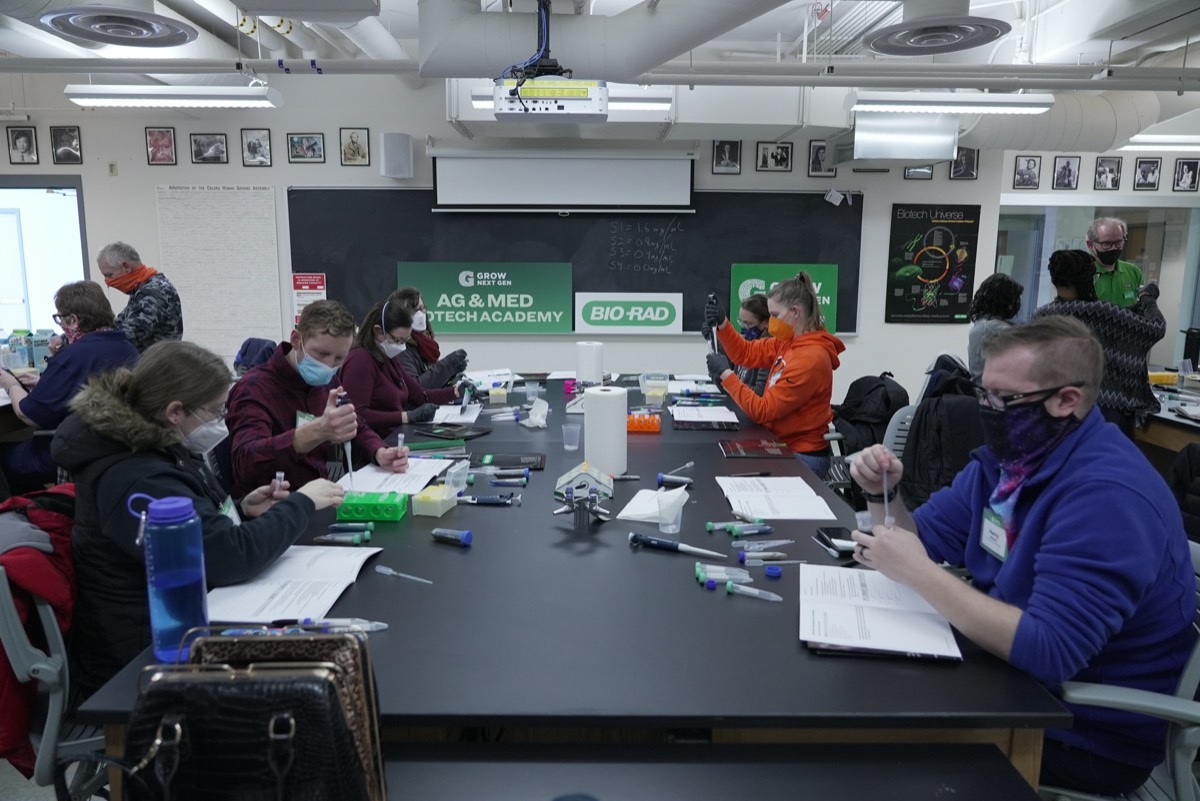Are you aware of the overlap between biotech in ag and medicine? 19 Ohio teachers recently attended the Ag & Med Biotech Academy and learned all about it!
The day began with a tour of 3Bar Biologics, a start-up company that has developed a way to activate microbes when needed, extending shelf life of products and enhancing plant health.
Next, the group gathered at Otterbein University for two BioRad lab activities presented by GrowNextGen teacher leader Jamie Allison. The first, Engineering Solutions for Global Health, addresses the challenge of world hunger. Over 800 million people worldwide are chronically undernourished.
Participants measured protein content in different milks using a Bradford assay. The kit they received will allow them to do this activity in the classroom. Students will collect data and design a treatment proposal for protein energy undernutrition (PEU). They will use an iterative engineering design approach to define the problem, create and test a prototype, and revise their solutions.

The protein testing is part of the GrowNextGen lesson Be a Food Scientist, available free on our website.

Presenter Allison then led the group through a BioRad lab activity based on the Biotechnology Explorer ELISA Immune Explorer kit. This kit utilizes a technique referred to as enzyme-linked immunosorbent assay (ELISA) to detect the presence of an antibody or an antigen in a sample. The protocol uses two antibodies, one of which is specific to the antigen and another that is coupled to an enzyme. This second antibody causes a color change to indicate a positive result. ELISA is a powerful antibody-based biodetection tool used in medicine and agriculture to find pathogens in water, food, or air.
Allison created a problem-based lesson involving Sudden Death Syndrome in soybeans, caused by a fungus called Fusarium virguliforme. The fungus infects roots and produces a toxin that will cause the leaves to yellow, reducing yield and causing death to the affected plants. The workshop participants were asked to consider “How might we utilize ELISA to help identify soil that has been infested with the Fusarium inoculum?” Teachers were given samples to test using the protocol to determine which areas of the field contained the fungus.
Watch our events page for your chance to participate in an upcoming workshop!